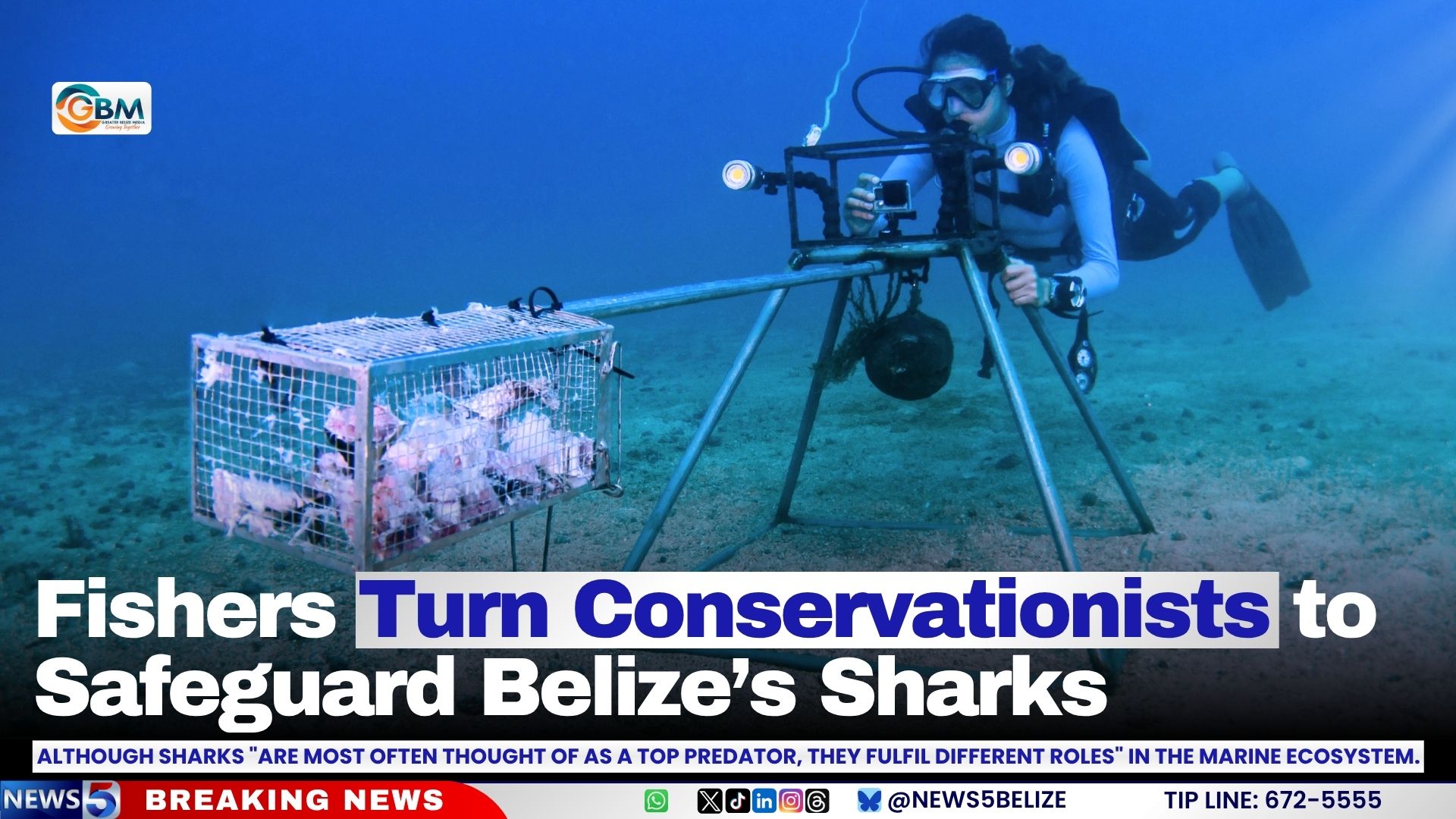Sharks often carry a fearsome reputation, but off the coast of Belize, these ocean giants are taking on a more noble role. They’re guardians of marine ecosystems and unlikely allies in science and sustainability.
Some 28 miles from Riversdale, Stann Creek, in the turquoise waters of Glover’s Reef Atoll, a passionate team of Belizean fishers-turned-conservationists are tagging sharks and tracking their movements. The data collected is helping scientists better understand shark populations and migration patterns across the Mesoamerican Barrier Reef System.
The expedition is led by Jessica Quinlan, Executive Director of Fishers for Science, and Hector Martinez, Vice Chair of the Belize Shark Fishers Association. Joining them are three second-generation fisherfolk, young Belizeans who are bringing deep-rooted seafaring knowledge to the frontline of ocean conservation.
The Science Behind the Policy
Quinlan explained that although sharks “are most often thought of as a top predator, they fulfil different roles” in the marine ecosystem. “They help to maintain populations of other fish, if they are prey, and what that does is help keep things in balance… and then, you know, decimate what their prey eats… And then we get this collapse and this imbalance of things.”
Belize is considered a shark hotspot, with over 40 species found in its waters. These include reef sharks, hammerheads, and tiger sharks. But this abundance is no accident. Belize’s diverse marine habitats, including mangrove forests, seagrass beds, and coral reefs, provide the perfect environment for these species to thrive.
“They’re sort of like the garbage truck of the ocean, especially the tiger shark,” said Martinez. “If there’s a sick fish on the reef, they can clean up that fish,” he added, which helps keep the whole food chain in balance.
The team is tagging sharks and deploying Baited Remote Underwater Video Stations (BRUVS), which are underwater cameras used to monitor shark activity over time. These stations have been gathering footage in Belize for over a decade and are part of a global project called Global FinPrint that tracks shark abundance in more than 50 countries.
“There’s probably ten years of BRUVS footage for Glover’s Reef, and so, over the ten years, they can monitor when the sharks went up, when they went down, or when they’re staying at a normal amount,” Martinez said.
Meanwhile, Quinlan’s journey in Belize began in 2017, when she worked with the Fisheries Department to develop a new protocol to monitor shark landings. She explained that by collecting fins from landed sharks and analysing their DNA, the team could identify species and estimate population trends.
Both Martinez and Quinlan said the data guides the team to understand the health of the marine environment, see if conservation efforts are working, and use it as a tool to shape policies around sustainable fishing.
Sustainability Through Local Knowledge
One of the young participants, Fernando Castellanos, is experiencing open-water diving for the first time. With guidance from Martinez, he helped set underwater receivers used to pick up acoustic signals from tagged sharks. These tags allow scientists to track where sharks travel, how far, and when. “This is new to me, and I love the experience,” Castellanos said.
For fishers like Anderson Martinez, this kind of work is more than just scientific; it’s personal. A lifelong lobster diver, he sees conservation jobs like these as an alternative way to earn a living while reducing pressure on declining fish stocks.
“When you give us jobs like that, it takes [away] a lot of pressure from the lobsters and the fish stocks,” he said. “It’s a good thing, and I do it along with my brothers and my father, and so, it brings all of us together.”
And while you’re wrapping up this good read, a team of conservationists resurfaces from the underwater world. Their work may be far from finished but undeniably impactful. Every tag and every dive is part of a larger movement that sees sharks not as threats, but as teachers, guides, and guardians of the sea.
